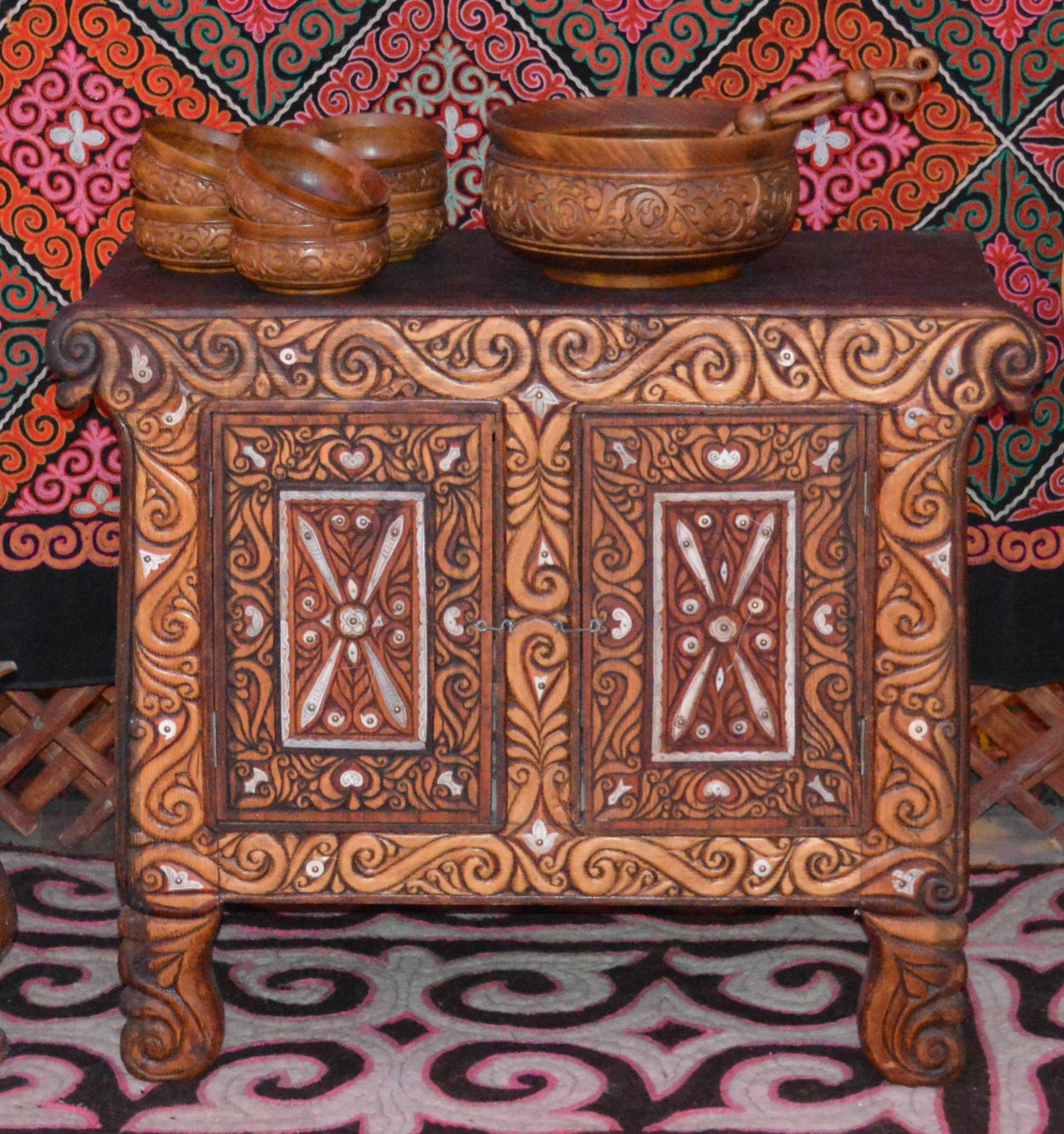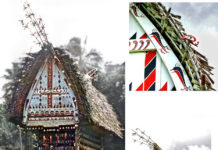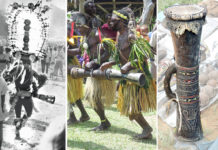The bessyk is a wooden cradle constructed to protect a baby from wind, humidity, and insects. Whenever Kazakhs moved from summer pasture to winter one and back, they always had dombra (traditional Kazakh string instrument) and bessyk. Dombra and bessyk are sacred items in every Kazakh family. They are placed in a place of honor in Kazakh homes. Bessyk is always inherited from the mother’s side (nagashy).
Light and movable rocking cradle is made from pine, birch or tal (a type of willow). Today artisans produce two types of bessyk: jel bessyk, a cradle assembled from formed sections of tal with grill, and jer bessyk, a whole cut cradle with decorated bars.
The structure of a bessyk consist of the following parts: a bar (belagash) that hold together all parts, side parts (bugen), legs (syraq), rounded bottom part (jorga), front and back parts (jaqtau), bed (taktay). The baby is placed inside and secured with ribbons (tartpa bau). The bottom of the cradle has a hole; underneatha clay pot (tubek) with sand is placed (during winter the clay pot is covered with felt bag). Shumek (carved tubular bone) is a hygienic piece for the cradle that functions as a drain line. The dimensions of the cradle are the following: length is 100 cm, width is 50 cm, and height is 70 cm.
For cradles a special set of bedding is made from felt and cotton: head and leg pillows, special textile padding for placing under knees and lower back, blanket. The most important piece is cover (zhabu), usually embroidered and of a different density to protect from insects during summer and from draft during winter. As well, every cradle has protective charms: owl feathers, fangs of predators, and symbols engraved on the bars of a cradle.
Another important interior accessory is a trunk, made from wood and having different functional purpose, therefore having different dimensions, construction, decoration. The most widespread type of a trunk is sandyq, a wooden trunk with a removable or a hinged cover for household items storage. To protect sandyq against floor dampness, a special wooden pallet (zhyuk ayaq) is made. Also to protect sandyq during seasonal migrations a cover (sandyq qap, abdyreh zhapqysh) is prepared from felt or other textile and usually decorated with embroidery or appliqué.
 Abdyreh is the biggest traditional trunk, having up to 100 cm in length and up to 70 cm in width and height. It is assembled from front, back, bottom, two side parts and a cover and has four legs and two carrying handles (qulaq). Abdyreh is traditionally decorated with metal inlay or metal plates and has a lock.
Abdyreh is the biggest traditional trunk, having up to 100 cm in length and up to 70 cm in width and height. It is assembled from front, back, bottom, two side parts and a cover and has four legs and two carrying handles (qulaq). Abdyreh is traditionally decorated with metal inlay or metal plates and has a lock.
Zhaglan is a trunk for clothes typically of an extended form, varying from 70 to 90 cm with 45 cm in width and 50 cm in height. This trunk has no legs and is leather covered; the front side is decorated with leather embossing and metal plates.
Kebezhe is a wooden trunk for food storage. Normally it is 70-90 cm in length, 40-45 cm in width and 40-50 cm in height. The bottom, back, front and side parts are hold with 4 wooden stands that also serve as legs. Kebezhe has a leather lock that is used only for holding the cover. Only the front side is decorated (bone inlay, painting or wood carving).
Assadal (as – food, adal – clean) is a trunk or cabinet for storage of food dishes and table accessories. It has the following dimensions: up to 110 cm in height, 50 cm in width and 80 cm in length. Assadal is a demountable structure with 2 covers/doors that is easy to carry during seasonal migrations. Front side and doors are decorated with bone inlay or flat wood carving.
The tradition of making craftsman’s trunks is revived recently. Today trunks are made for jewelry makers (zeger sandyq), shoemaker (yetikshi sandyq), wood carver (agash-sheber sandyq), blacksmith (usta sandyq).
Modern artisans include T. Begymbet, N. Ymanbayev and sons, M. Zhanybek, Ya, Auelbekov, S. Salymov, and young craftsmen, B. Moldabekov, N. Orynbassarov, M. Zhapabayev and M. Kanaliyev.





